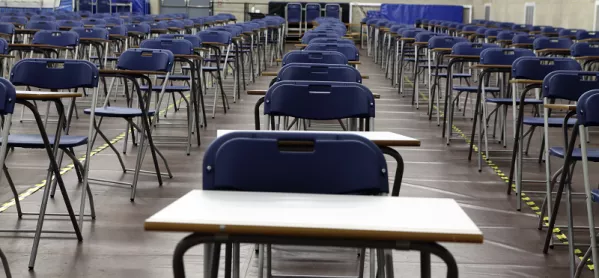Grammar school decision Q&A: everything you need to know

Today education secretary, Nicky Morgan, announced that she was approving the first new grammar school in 50 years. Here is your essential background briefing:
Weren’t grammar schools abolished years ago?
Most were (or at least, they were converted into comprehensives) in the late 1960s and throughout the 1970s. But some held out. A rump of 163 grammars remain in England, many in the counties of Kent, Lincolnshire, Buckinghamshire and Essex. Sixty-nine still exist in Northern Ireland.
Didn’t Labour try to get rid of the remaining grammars when it took power in 1997?
Labour fudged what ministers realised would be a hugely controversial issue. In 1998, legislation was passed banning new grammars and allowing local ballots on the end of academic election. But for a ballot to be triggered, campaigners first had to collect signatures from at least 20 per cent of those entitled to vote in it. In practice, that meant 50,000 signatures were needed for a ballot in Kent. Ripon, a small North Yorkshire cathedral city with a single grammar school, was the only area that crossed the required threshold. But the resulting ballot led to the victory of the pro-selection campaign by two votes to one. The issue then lay dormant until 2013.
What happened in 2013?
Two Kent grammars - Invicta and Weald of Kent - applied to get around the ban by opening new annex, under provisions made buy the collation government allowing existing schools to enlarge. Their plans were turned down, partly because Weald of Kent, a girls’ grammar in Tonbridge, was applying to open a co-educational annex. But last year it applied again, this time to open an all-girls annex in Sevenoaks, which has no grammar school.
And today?
Nicky Morgan, education secretary, has made a written ministerial statement on school expansion in the Commons today which confirms that she has approved the proposal Weald of Kent to expand on to a new site in Sevenoaks, Kent. She says: “I am satisfied that this proposal represents a genuine expansion of the existing school.”
Why has it taken so long? I thought the Tories were in favour of grammars?
They were. In 1997, prime minister John Major pledged a grammar school “in every town” during his unsuccessful general election campaign. In 2004, three Tory leaders later, Michael Howard stated that under a Conservative government, “grammar schools will survive and thrive”. But his successor, David Cameron, had different ideas. Just three days after taking over the leadership in December 2005, Mr Cameron stated that there would be “no return to the 11-plus”.
Why the change of heart?
It was part of a move to detoxify the Conservative brand and a recognition of modern realities in existing grammar. As David Willetts explained in 2006, when he was the Tory shadow education secretary, grammars could no longer be seen as genuinely meritocratic because they took less than their fair share of deprived pupils.
So why have the Conservatives decided it is a good idea to approve the first new grammar school for half a century today?
Because Tory support for the 11-plus never went away. Mr Willetts’ views soon led to his demotion. And, earlier this year, prominent Conservative MP Graham Brady spoke for many in his party when he said that grammar schools would improve opportunity in a country “bogged down in class and privilege”. He stated that is was “widely accepted that a golden age of opportunity in the 1950s and 1960s saw pupils from state grammars … storm the bastions of privilege”. He argued that policies such as grant-maintained schools, academies and free schools had failed to do the same since.
Is Mr Brady correct?
Social mobility did increase in the decades after the war. But many have suggested that this was the result of sudden growth in white-collar jobs, rather than the way schools were organised. In 2010, the Organisation for Economic Co-operation and Development published a paper that said the UK was one of the least socially mobile countries in the developed world. But the report looked at people who were at least 35 when the data was collected, so were already at secondary school during the 1980s, before grant-maintained schools, let alone free schools were in place.
What will happen now?
Reports have suggested that as many of 12 similar proposals for “grammar satellites” are in the pipeline. So the Sevenoaks decision will have huge implications for the future of selection in England, and could also spark divisions within the Conservative party. In her written statement, Nicky Morgan, says that the decision: “does not reflect a change in this Government’s position on selective schools” and that further applications from grammars to expand will be considered within the framework of the statutory prohibition on new selective schools.
Keep reading for just £1 per month
You've reached your limit of free articles this month. Subscribe for £1 per month for three months and get:
- Unlimited access to all Tes magazine content
- Exclusive subscriber-only stories
- Award-winning email newsletters



